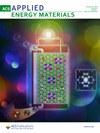Role of interoceptive fear and maladaptive attention and behaviors in the escalation of psychopathology - a network analysis.
IF 5.4
3区 材料科学
Q2 CHEMISTRY, PHYSICAL
引用次数: 0
Abstract
The complex interplay of fear, attention, and behavior toward bodily sensations with psychopathological symptoms and how they mutually influence and potentially reinforce one another remains to be fully elucidated. In this study, we used a network analytical approach to unravel these complex interactions. Specifically, we aimed to identify central symptoms and etiologically relevant factors that might be associated with anxiety and depressive core symptoms. To this end, the following clusters were assessed in 791 adults: interoceptive fear, interoceptive attention, maladaptive behaviors related to bodily sensations, and core symptoms of anxiety and depression. This network was modeled using a Gaussian Graphical Model. Central variables (nodes) were identified using centrality indices and bridge analysis. Self-examination and attention to bodily sensations emerged as central nodes. Moreover, time spent paying attention to bodily sensations, fear of anxiety-related sensations, and self-examination were identified as central bridge nodes, that is, central nodes connecting psychopathologically relevant symptom clusters. The present study indicates that fear of bodily sensations, the amount of attention and time spent focusing on somatic sensations, and self-examination are central factors. The findings suggest potential targets for future longitudinal studies on the impact of these factors for the escalation of anxiety and depressive symptoms.感知间恐惧与适应不良的注意力和行为在精神病理学升级中的作用--网络分析。
恐惧、注意力和对身体感觉的行为与精神病理症状之间复杂的相互作用,以及它们如何相互影响和潜在地相互强化,仍有待全面阐明。在本研究中,我们采用了网络分析方法来揭示这些复杂的相互作用。具体来说,我们旨在找出可能与焦虑和抑郁核心症状相关的中心症状和病因相关因素。为此,我们对 791 名成人进行了以下集群评估:感知间恐惧、感知间注意、与身体感觉相关的适应不良行为以及焦虑和抑郁的核心症状。该网络采用高斯图形模型建模。中心变量(节点)是通过中心性指数和桥接分析确定的。自我检查和关注身体感觉成为中心节点。此外,关注身体感觉所花费的时间、对焦虑相关感觉的恐惧和自我检查被确定为中心桥节点,即连接精神病理学相关症状群的中心节点。本研究表明,对身体感觉的恐惧、对躯体感觉的关注程度和关注时间以及自我检查是核心因素。研究结果为今后纵向研究这些因素对焦虑和抑郁症状升级的影响提出了潜在目标。
本文章由计算机程序翻译,如有差异,请以英文原文为准。
求助全文
约1分钟内获得全文
求助全文
来源期刊

ACS Applied Energy Materials
Materials Science-Materials Chemistry
CiteScore
10.30
自引率
6.20%
发文量
1368
期刊介绍:
ACS Applied Energy Materials is an interdisciplinary journal publishing original research covering all aspects of materials, engineering, chemistry, physics and biology relevant to energy conversion and storage. The journal is devoted to reports of new and original experimental and theoretical research of an applied nature that integrate knowledge in the areas of materials, engineering, physics, bioscience, and chemistry into important energy applications.
 求助内容:
求助内容: 应助结果提醒方式:
应助结果提醒方式:


